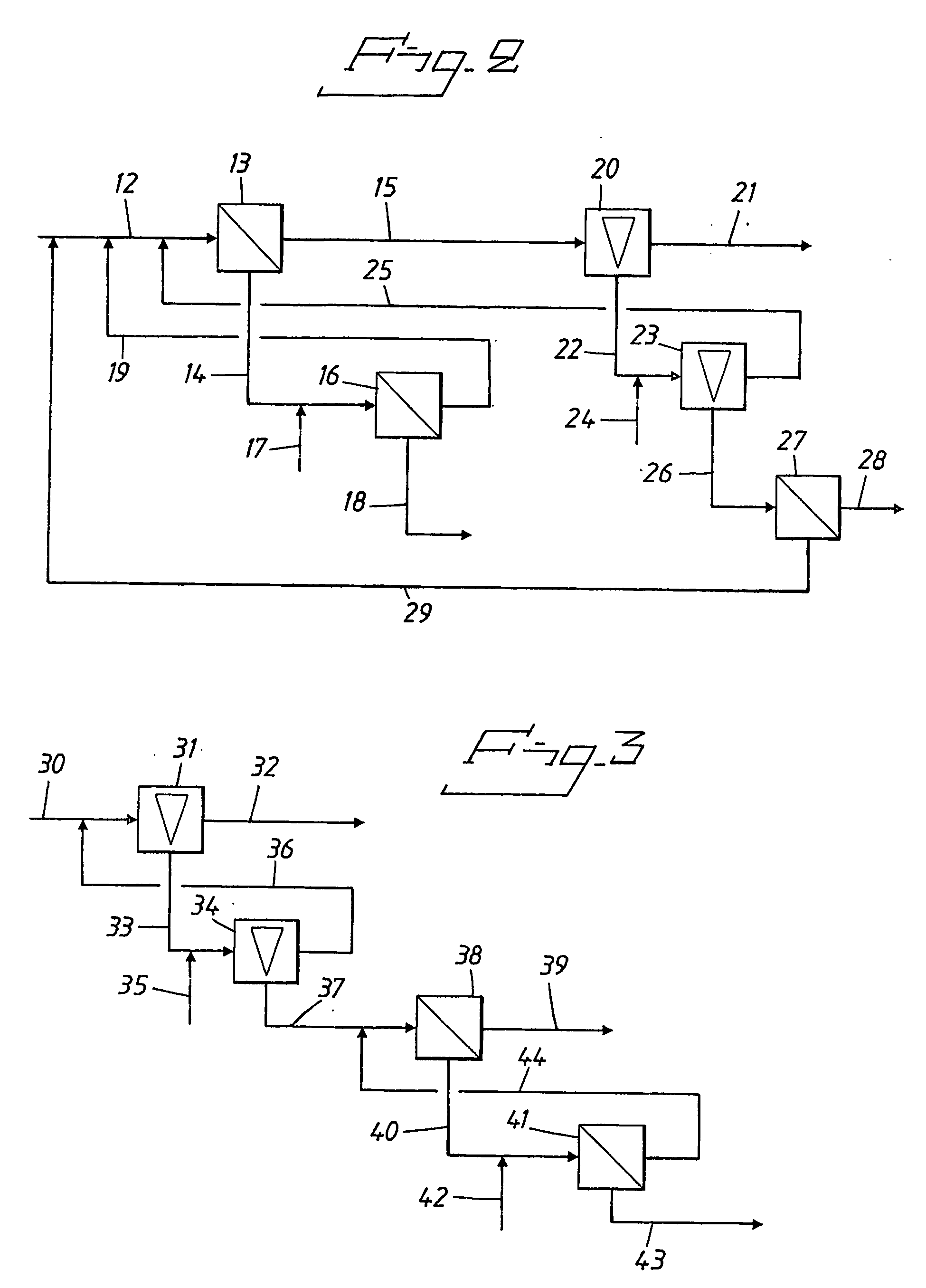Method for selective removal of ray cells from cellulose pulp
a technology of cellulose pulp and ray cells, which is applied in the field of selective removal of cellulose pulp ray cells, can solve the problems of inconvenient use of this cellulose pulp fraction, inability to remove ray cells, and inability to remove cellulose pulp, etc., and achieves good bleaching effect, low pulp brightness, and high bleaching chemical consumption
- Summary
- Abstract
- Description
- Claims
- Application Information
AI Technical Summary
Benefits of technology
Problems solved by technology
Method used
Image
Examples
Embodiment Construction
[0058] In a factory for production of thermomechanical pulp (TMP) sample of such a pulp was collected in one position which will be specified below.
[0059] The starting material for the pulp production was fresh Scandinavian spruce wood with an estimated content of ray cells of app. four volume percent (corresponding to app. five weight percent). After debarking of the spruce logs they were chipped, after which followed conventional screening of the chips and the accepted chips were pretreated according to the following. The chips were preheated in a steam tank and were then washed in a chip washer. The steam treated and washed chips were fed into a comprimating screw, whereupon the material was supplied to a steam preheater with app. 2 bar absolute pressure. The dwell time was app. 3 min.
[0060] After that the chips were supplied to a single disc refiner with a diameter of 58 inch type RLP 58 (Sunds Defibrator AB). Within the refiner the pressure was 3.5 bar. The speed of rotation ...
PUM
| Property | Measurement | Unit |
|---|---|---|
| diameter | aaaaa | aaaaa |
| width | aaaaa | aaaaa |
| volume percent | aaaaa | aaaaa |
Abstract
Description
Claims
Application Information
 Login to View More
Login to View More - R&D
- Intellectual Property
- Life Sciences
- Materials
- Tech Scout
- Unparalleled Data Quality
- Higher Quality Content
- 60% Fewer Hallucinations
Browse by: Latest US Patents, China's latest patents, Technical Efficacy Thesaurus, Application Domain, Technology Topic, Popular Technical Reports.
© 2025 PatSnap. All rights reserved.Legal|Privacy policy|Modern Slavery Act Transparency Statement|Sitemap|About US| Contact US: help@patsnap.com



